If you reach Innsbruck for the first time and look around in good weather, you are usually immediately deeply impressed by the unique location. All around, the mountains tower up. Sometimes conical, sometimes gentle and hilly, and sometimes steep with jagged rocky edges.
The view from the city delights (almost) everyone: vacationers, newcomers as well as those who grew up here. There are several beautiful vantage points in Innsbruck, but if you want to see more and, above all, more of the horizon, you have to climb the mountains in Innsbruck. With a little bit of exercise and alpine experience, you can enjoy magnificent views of the (in my opinion) only city located in the middle of the Alps. Or, to use a well-known saying:
If you don’t climb the mountains, you won’t see into the distance.
Nordkette
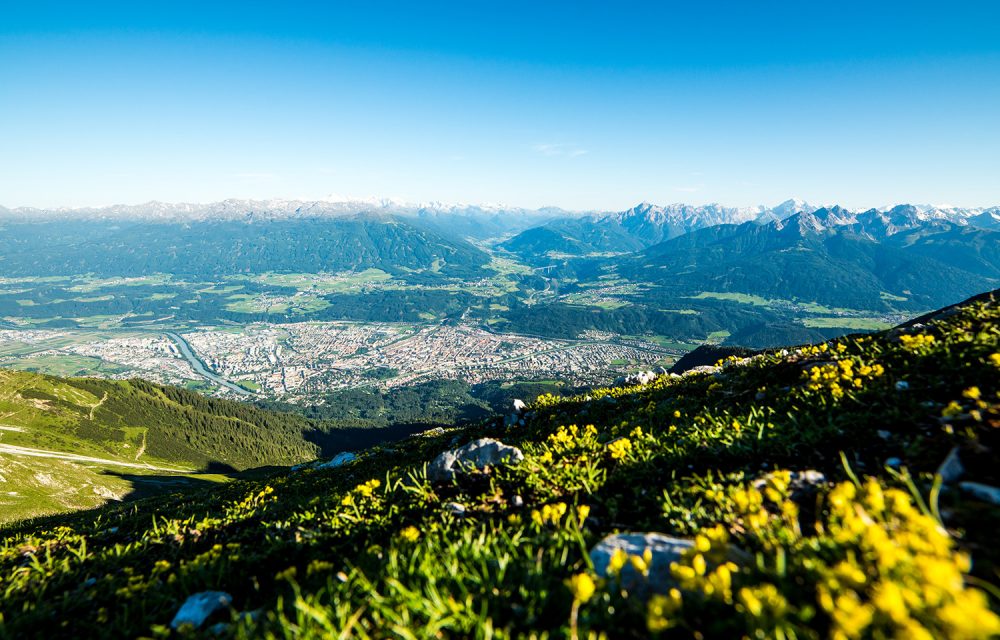 Classic view from the Nordkette ©Marius Schwager
Classic view from the Nordkette ©Marius Schwager
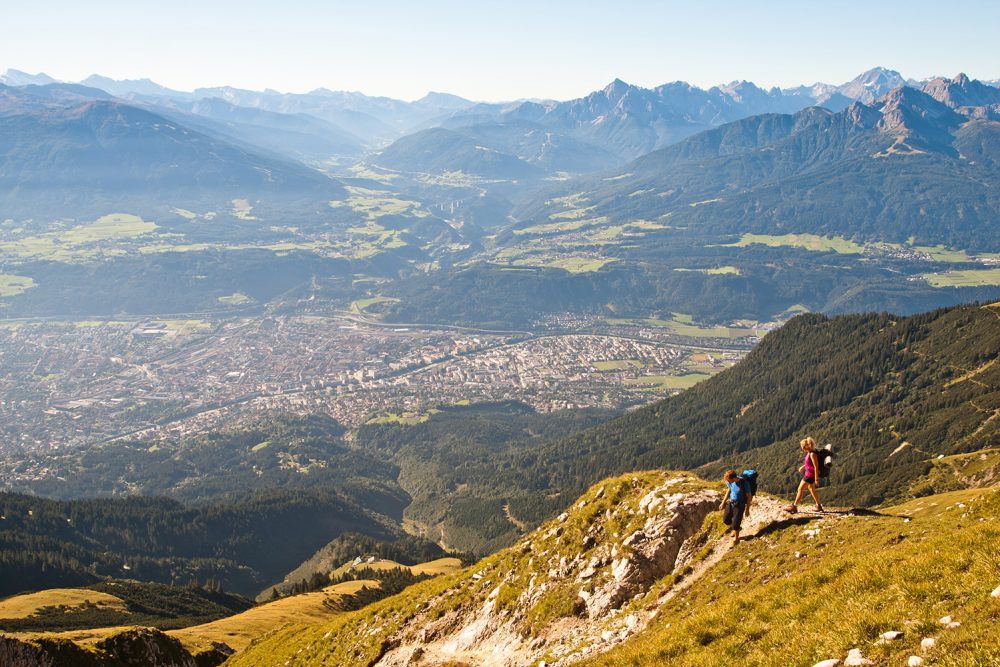 View from the Nordkette ©Marius Schwager
View from the Nordkette ©Marius Schwager
The Nordkette cable car takes 20 minutes to reach Innsbruck’s northern alpine boundary. Those who don’t like don’t really have to exercise for this view. Hikers linger on one of the numerous alpine pastures with a cold drink or warm Kaspressknödeln or move eastward e.g. along the Goetheweg. Those with alpine experience and climbing affinity tend to head west via the Nordketten-Klettersteig to the Langer Sattel or even to the Brandjochspitze. No matter in which direction, the view is similarly enticing on both sides.
Glungezer and Glungezer Hut
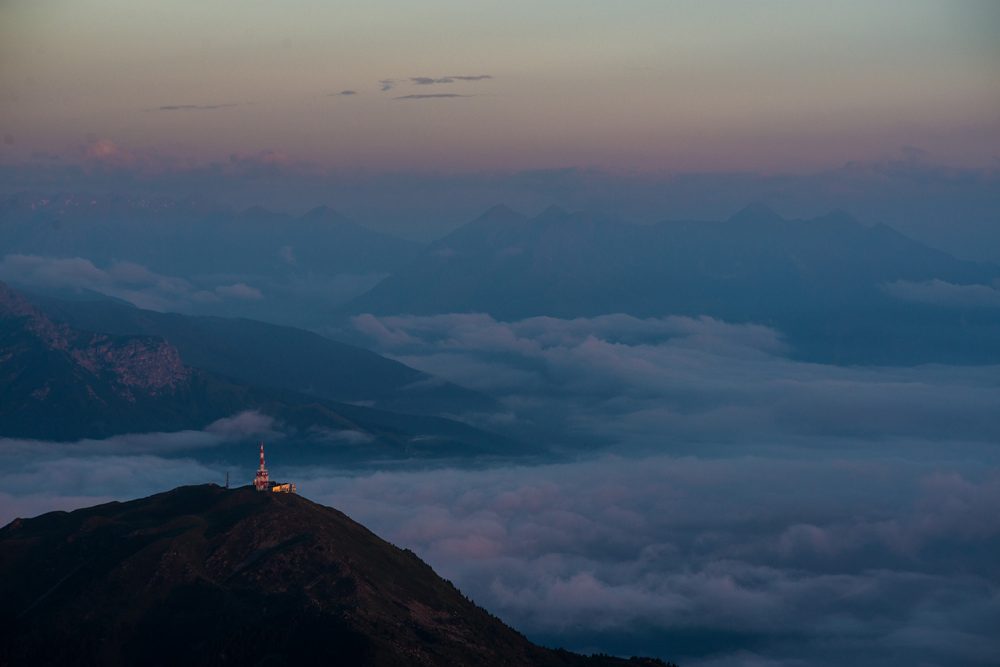 The Patscherkofel (antenna mast) and Roßkogel – right – before sunrise, ©Marius Schwager
The Patscherkofel (antenna mast) and Roßkogel – right – before sunrise, ©Marius Schwager
Not the local mountain Patscherkofel located directly south of Innsbruck, but only two easy hiking hours further east, the Glungezer is a bit higher and more panoramic. Almost at the summit is the Glungezerhütte, operated by the Alpine Club, at 2678m. The pre-summit is one of the most beautiful sunrise and sunset spots in Tyrol, the catering of hut host Gottfried is even known beyond the country’s borders in alpine circles. The most beautiful approach is via the Zirbenweg.
Nockspitze
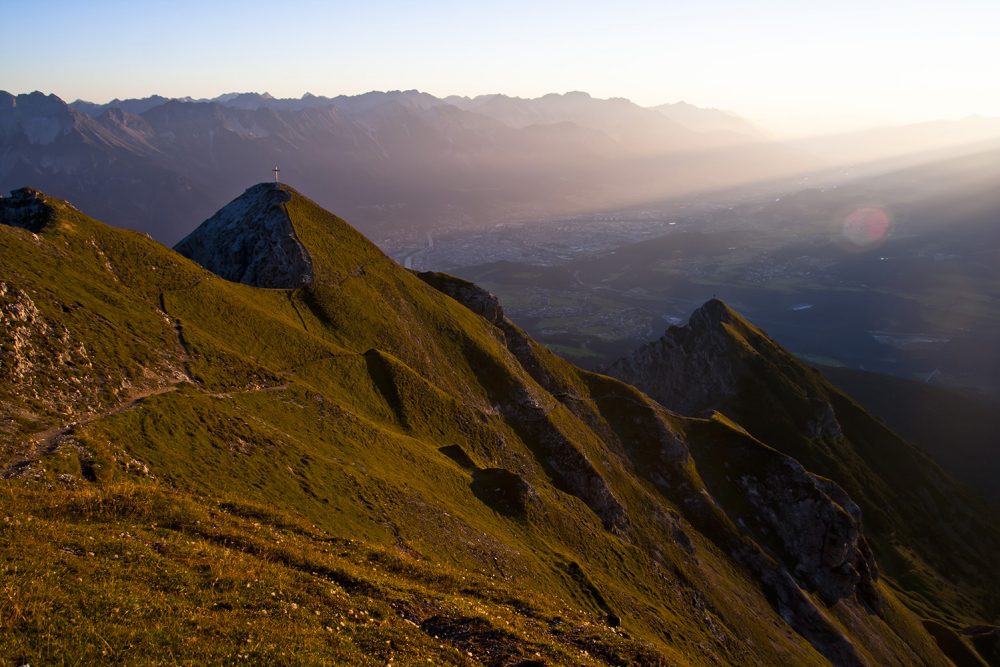 Nockspitze ©Marius Schwager
Nockspitze ©Marius Schwager
Whether named Nockspitze or Saile, the 2400m-high mountain is relatively flat at its top and is considered one of the hotspots on balmy summer nights for Innsbruckers. The lush and largely almost level grass at the summit must often be shared with sunrise watchers and some sheep. The approach is a normal to moderately difficult mountain hike. The easiest way is via the Axamer Lizum parking lot and the chairlift to Birgitzköpfelhaus and from here along the southern hiking trail.
Serles
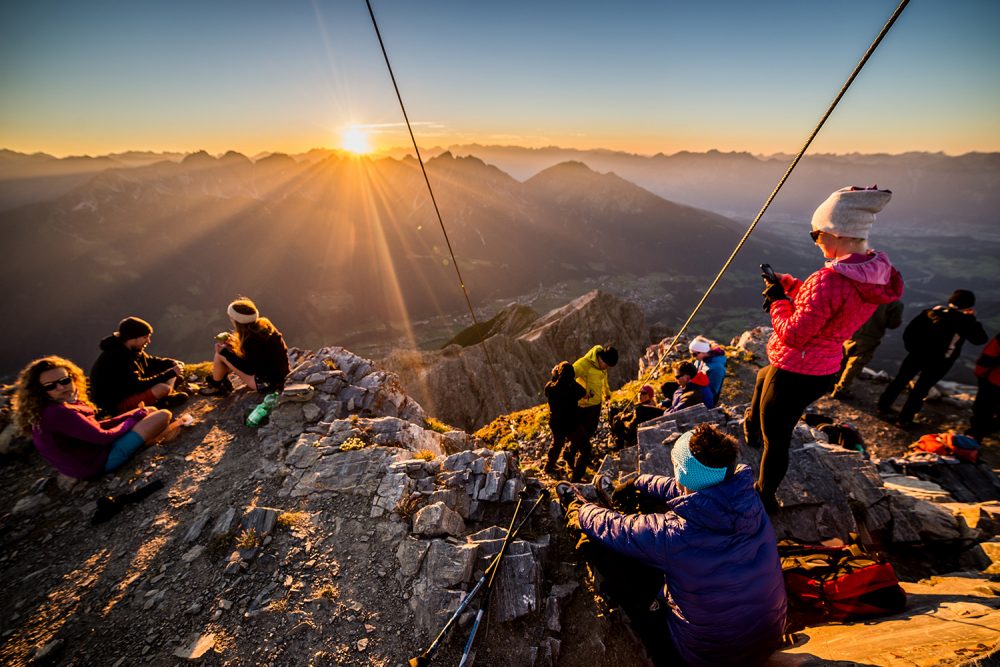 Sunset on the Serles, ©Marius Schwager
Sunset on the Serles, ©Marius Schwager
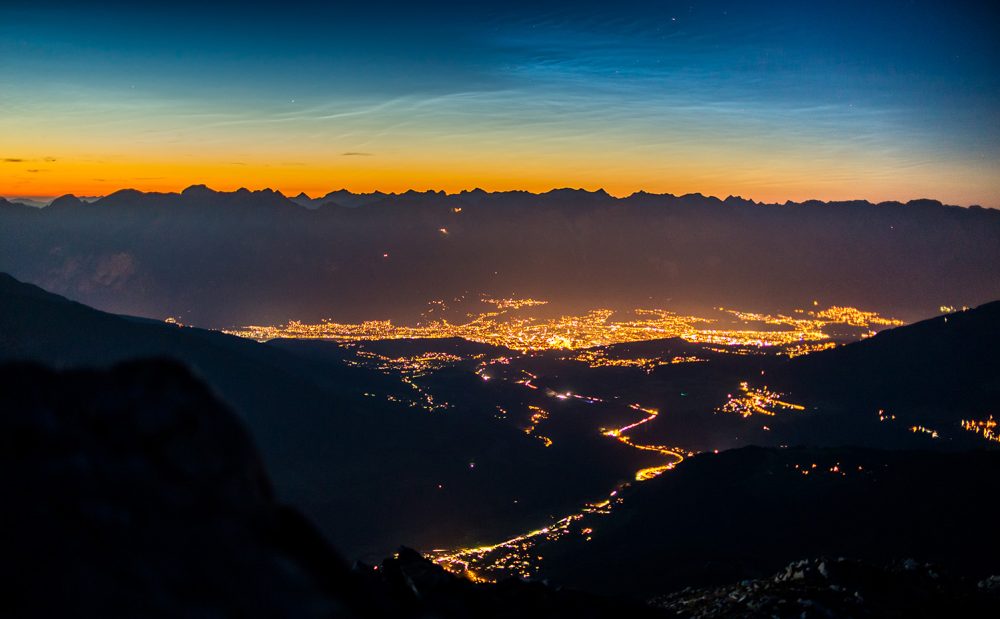 Innsbruck at nightfall, ©Marius Schwager
Innsbruck at nightfall, ©Marius Schwager
There are several myths surrounding the secret queen of the Tyrolean Alps. Certainly, however, the ascent is not the easiest and requires a good three hours march from Maria Waldrast, surefootedness and a head for heights would also be useful qualities for the summit aspirant. The summit plateau drops steeply, the few ground-level sleeping places are stony and quite coveted at sunrise.
Roßkogel
Rather less noticed is the 2646m high Roßkogel in the west of Innsbruck. From the top station of the Rangger Köpfl ski area or the last (paid) parking lot in Stieglreith, there are at least 1300 meters of ascent and descent to the rocky giant. The ascent is a moderately difficult mountain hike from both possible sides. You should be free of giddiness and a little sure-footed, then the view sweeps over the Innsbruck airport to the eastern end of the Inn valley.
 Innsbruck covered under a sea of clouds with a panoramic view over all the panoramic mountains, ©Marius Schwager
Innsbruck covered under a sea of clouds with a panoramic view over all the panoramic mountains, ©Marius Schwager
- Legal: Camping is officially prohibited in Austria in public areas. Emergency bivouacking in alpine areas without a tent is permitted. Responsible mountain enthusiasts take all their trash back to the valley, everyone else does.
- Overnight stays
- Mountain railroads with the Innsbruck Card
- Tip: With the free mountain hiking program you can explore the most beautiful panoramic mountains and much more with certified hiking & mountain guides from the Alpine School Innsbruck.












